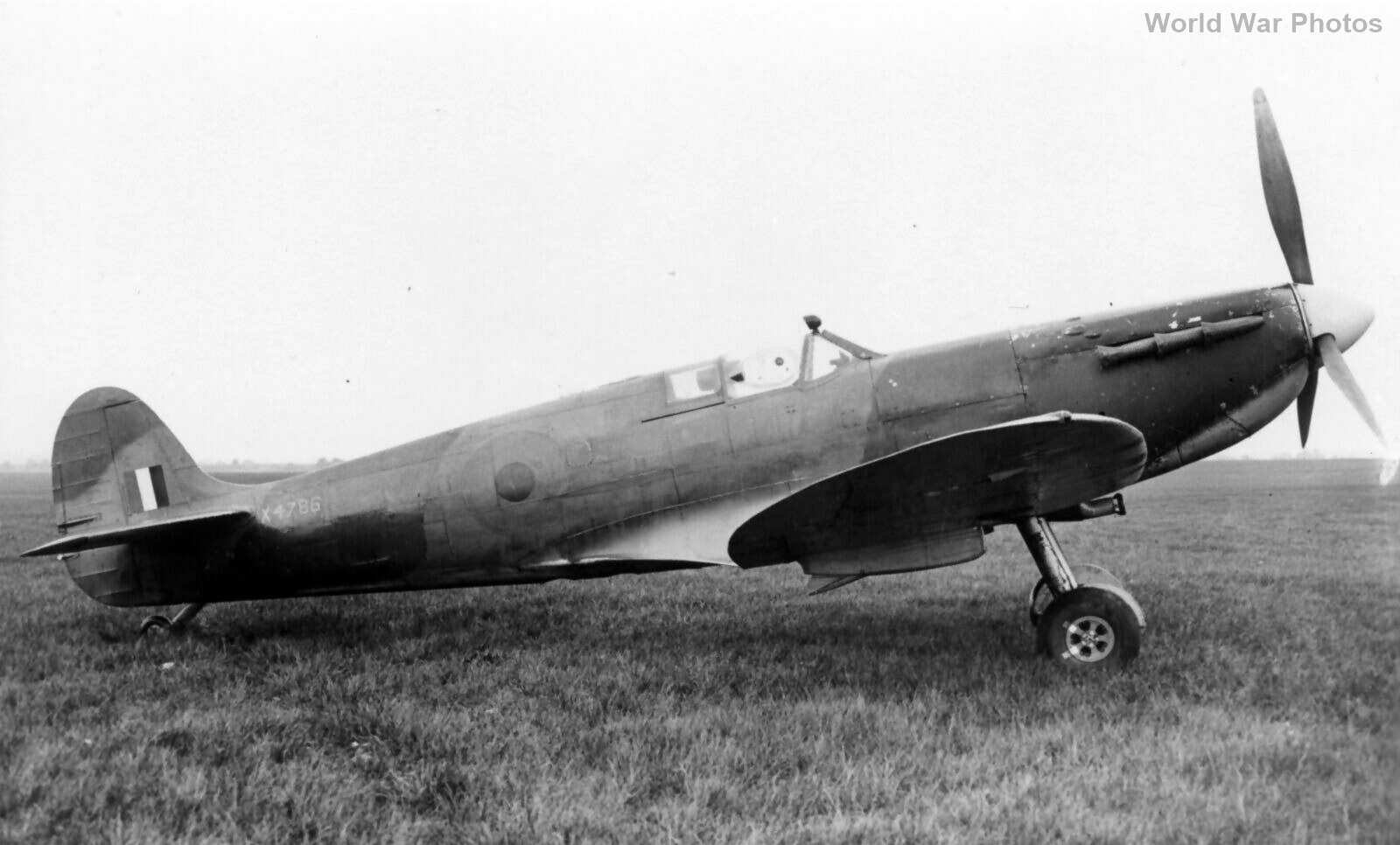The Supermarine Spitfire PR Type G (also known as PR Mk IG or PR Mk VII) was an early photo-reconnaissance variant of the Spitfire, modified specifically for long-range reconnaissance missions. It was derived from the Mk V series of Spitfires, which were converted by Heston Aircraft to serve in the photo-reconnaissance role.
Specifications of PR Type G (PR Mk IG or PR Mk VII):
- Designation: PR Type G (PR Mk IG or PR Mk VII)
- Type: Photo-Reconnaissance Aircraft
- Span: 36 ft 10 in (11.23 m)
- Length: 29 ft 11 in (9.12 m)
- Height: 11 ft 5 in (3.48 m) [Tip of Prop, Tail Down]
- Engine:
- Single-speed, single-stage 1,030 hp (768 kW) Rolls-Royce Merlin III or 1,210 hp (902 kW) Merlin 45
- Weight:
- Empty: 4,985 lb (2,216 kg)
- Max Loaded: 6,584 lb (2,986 kg)
- Armament:
- Eight 0.303 in (7.7 mm) Browning machine guns (350 rounds per gun)
- Cockpit: Pressurized, with internal bulletproof glass and characteristic ‘teardrop’ side blisters for better visibility.
- Tailwheel: Fixed
- Camera Equipment:
- Two Vertical F.24 cameras (5-inch or 14-inch focal length).
- An additional F.24 camera could be mounted in the fuselage for enhanced reconnaissance capabilities.
- Propeller:
- Rotol, three-blade RX5/14, variable-pitch, constant-speed, made from Hydrulignum, or
- de Havilland, three-blade Type 5/39 or 5/39A propeller.
- Production: 45 conversions from Mk V Spitfires by Heston Aircraft.
Role & Features:
The PR Type G was one of the early attempts to modify the Spitfire for high-altitude, long-range reconnaissance roles. It was distinguished by its pressurized cockpit, which allowed for better performance at higher altitudes. The aircraft’s large camera suite – featuring multiple F.24 cameras – enabled it to capture high-quality reconnaissance images from various angles.
This version played a key role in gathering intelligence during World War II, leveraging the Spitfire’s speed and maneuverability combined with its camera equipment to overfly enemy territory and return with valuable reconnaissance data. Despite being relatively lightly armed with machine guns, its primary focus was on avoiding engagement and collecting imagery for strategic planning.
